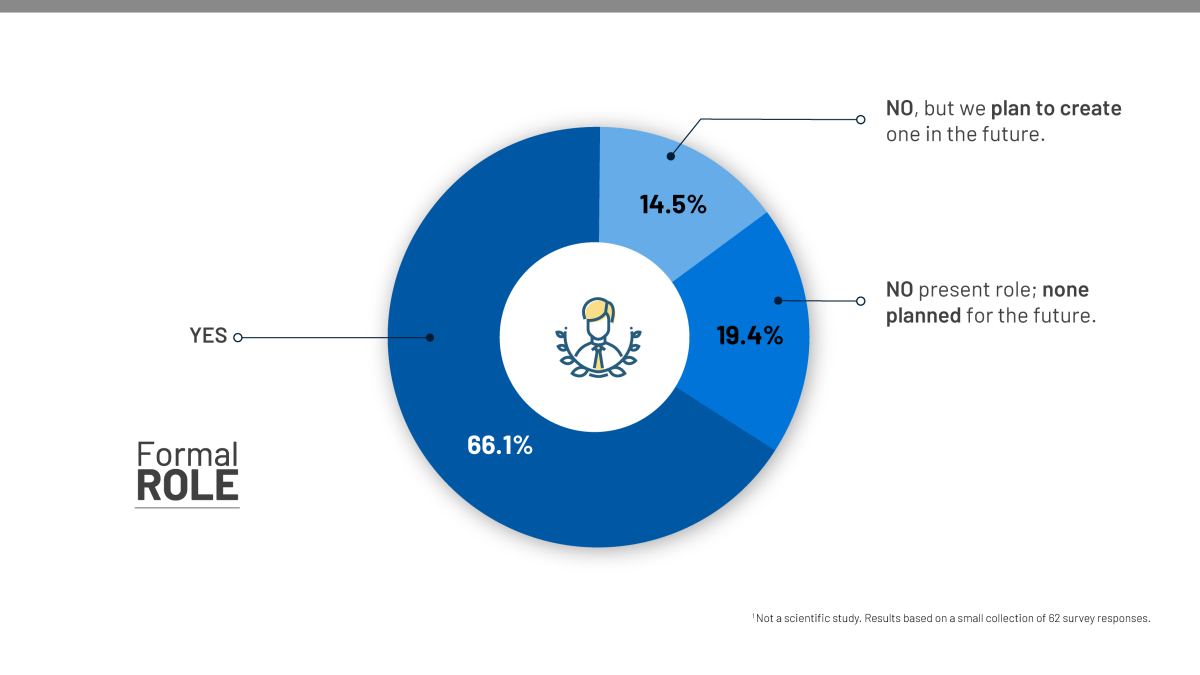Is the business architect role formalized within your organization?
Here are the results from a survey conducted in December 2019.1
In summary, 66.1% of respondents have formally defined the business architecture role within their organizations, with an additional 14.5% of respondents planning to do so in the future. This is a good indicator that the business architecture discipline and role are continuing to gain traction. It also builds more precedent for the business architecture and human resource leaders of the future to point to when they need to define new business architect roles within their organizations.
A number of respondents indicated having or planning to have three business architect roles or levels, generally described with an associate or junior role, an intermediate role, and a senior role. However, the naming of these roles varies across organizations. For example, some organizations use titles such as Business Architect, Senior Business Architect, and Lead Business Architect. One organization indicated they have a job family for Enterprise Business Solutions Architect with associate, intermediate and senior levels. There were other examples where the role was not formalized as a business architect per se, but for example as an enterprise architect with a business and information architecture focus.
Respondents who indicated that their organization did not have a formal business architect role with none currently planned cited a few key reasons:
- Challenges in obtaining buy-in due to leadership changes or other organizational dynamics
- Challenges in obtaining buy-in for the additional value of business architecture compared to related disciplines and roles
- The organization’s desire to outsource strategic design and planning to external consultants
- 1Not a scientific study. Results based on a small collection of 62 survey responses.
